The monument, erected in Germany by the Soviet soldier-liberator, who carries a small rescued girl in her arms, is one of the most magnificent symbols of Victory in the Great Patriotic War.
Hero warrior
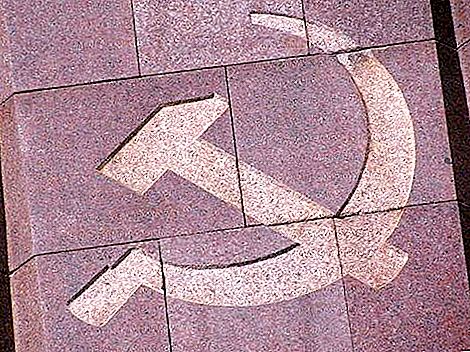
The appearance of the sculpture was originally conceived by the artist A.V. Gorpenko. However, the key author of the monument to the warrior-liberator E.V. Vuchetich was able to bring his idea to life only thanks to the decisive word of Stalin. The installation was decided to coincide by May 8, 1949.
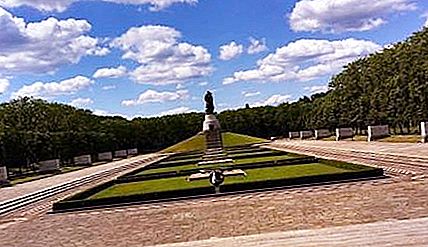
Architect Ya. B. Belopolsky and engineer S. S. Valerius made the main sketches of the future sculpture, however, the key part of the work fell on the shoulders of the sculptor E.V. Vuchetich, admired by the feat of the soldier Nikolai Maslov, who selflessly fought with the German invaders up to the capital of the Nazi Reich.
It was the feat of an ordinary soldier who was not afraid to go under the explosions of shells and bullets flying from all sides in order to save the little German girl, played a decisive role in creating a monument to Soviet soldiers in Berlin. The monument to such an outstanding person was to be created only by an equally non-standard person. It was decided to establish a sculpture in Treptower Park as a symbol of victory over fascism.
The best of the best
In order to show the whole world the heroic deed of our soldiers, the Soviet government allowed to erect a monument to Russian soldiers in Berlin. Treptow Park received an eternal decoration in the form of a memorial complex only after the best of the best were selected at a competition in which about 33 individual projects participated. Moreover, only two of them reached the leading position. The first belonged to E.V. Vuchetich, and the second - Ya.B. Belopolsky. In order for the monument to Russian soldiers in Berlin to be erected in compliance with all ideological standards, the 27th Directorate responsible for the army defense structures of the entire Soviet Union had to follow.
Since the work was difficult and painstaking, it was decided to involve more than 1, 000 German soldiers serving sentences in Soviet prisons, as well as more than 200 workers at the Noack foundry, the Puhl & Wagner mosaic-glass shop and gardeners working in the Spathnursery partnership.
Manufacture

Soviet monuments in Berlin had to constantly remind German citizens what their people would expect if such terrible acts were repeated. It was decided to make the monument at the Monumental Sculpture factory located in Leningrad. The monument to Russian soldiers in Berlin exceeded the mark of 70 tons, which greatly complicated its transportation.
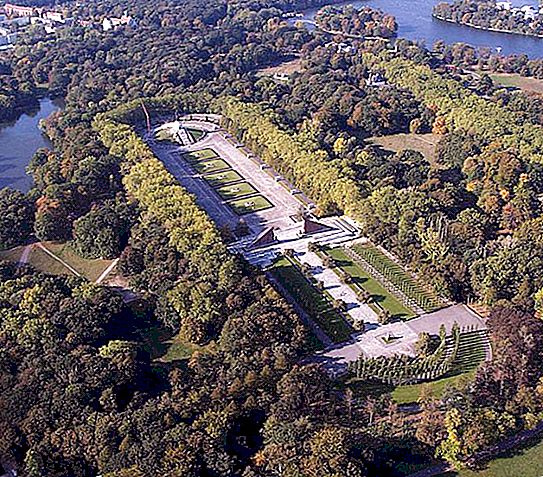
Because of this, it was decided to divide the structure into 6 main components and thus transfer them to Treptow Park in Berlin. The hard work was completed in early May under the tireless leadership of the architect J. B. Belopolsky and engineer S. S. Valerius, and already on the 8th the monument was presented to the whole world. The monument to Russian soldiers in Berlin reaches a height of 12 meters and is today the key symbol of the victory over fascism in Germany.
The opening of the memorial in Berlin was led by A.G. Kotikov, who is a major general of the Soviet army and at that time fulfilling the role of city commandant.
By mid-September 1949, the monument to the soldier-liberator in Berlin came under the control of the Soviet military commandant’s office of the magistrate of Greater Berlin.
Restoration
By the fall of 2003, the sculpture had become so dilapidated that the FRG leadership decided on the need for restoration work, during which the monument to the soldier-liberator in Berlin was dismantled and sent for modernization. It passed almost for six months, as a result of which, in May 2004, the renewed figure of the Soviet hero returned to its original place.
The author of the monument "Warrior-Liberator"
The sculptor of the monument to the warrior-liberator Evgeny Viktorovich Vuchetich is by far the most famous muralist of the Soviet era.
| Town | Title | Year |
| Volgograd | Mamayev Kurgan | |
| Moscow, Lubyanka Square | Monument to Dzerzhinsky | 1958 |
| UN gift |
Figure "Weapon swords on yelling." Called for the universal preservation of peace |
1957 |
| Berlin | Monument to the Soviet soldier | 1949 |
Who is he, the hero?
The monument in Berlin was made using the figure of a Soviet soldier - the hero of Nikolai Maslov, a native of the village of Voznesenki. This heroic man lived in the Tula district of the Kemerovo region. He managed to save a little German girl during the storming of Berlin in April 1945. During the operation to liberate Berlin from the remnants of fascist formations, she was only 3 years old. She sat in the ruins of the building near the body of the deceased mother and cried sobbing.
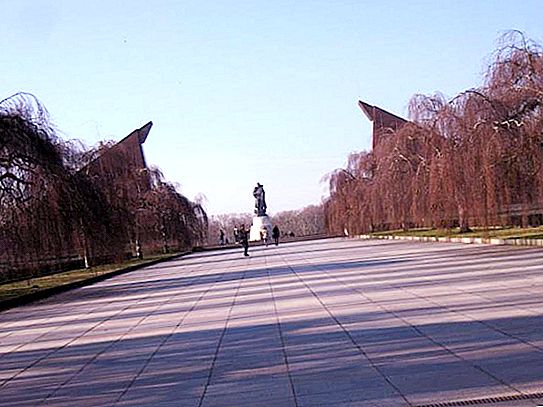
As soon as a slight calm formed among the bombings, the Red Army heard the cry. Maslov, without hesitation, made his way around the shelling zone behind the child, asking his comrades to cover him, if possible, with fire support. The girl was saved from under the fire, but the hero himself was seriously injured.
The authorities of Germany did not forget about the magnanimity of the Soviet man and, in addition to the monument, immortalized his memory by hanging a sign on the Potsdam bridge detailing his exploit for the sake of a German child.
Biography details
Nikolai Maslov spent most of his conscious life in harsh Siberia. All the men in his family were hereditary blacksmiths, so the future of the boy was considered initially predetermined. His family was large enough, given that, in addition to him, his parents had to raise five more children - 3 boys and 2 girls. Until the outbreak of hostilities, Nikolai worked as a tractor driver in his native village.
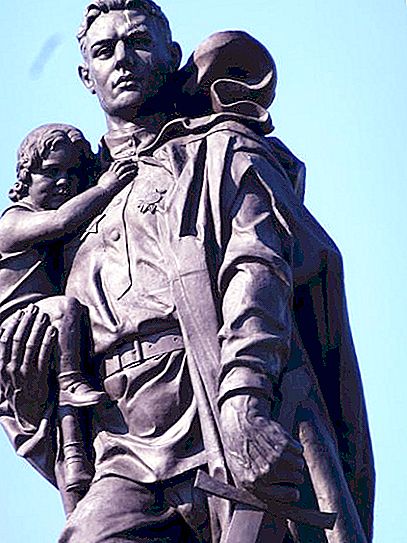
As soon as he turned 18, he was drafted into the ranks of the Soviet Army, where he graduated with honors from the preparatory school of mortar men. Exactly one year after he first joined the army, his regiment first encountered military realities, falling under German fire on the Bryansk Front near Kastornaya.
The battle was very long and difficult. Soviet soldiers managed to escape from the fascist encirclement three times. Moreover, it is necessary to pay attention to the fact that even in such a difficult situation, the soldiers managed to save at the cost of many human lives the banner that they received in Siberia in the first days of the creation of the regiment. The children managed to get out of the environment with only 5 people, one of which was Maslov. All the others consciously gave their lives in the Bryansk forests for the life and freedom of the Fatherland.
Successful career
The survivors were reorganized, and Nikolai Maslov joined the legendary 62nd army under the command of General Chuikov. Siberians managed to win on Mamaev Kurgan. Nicholas and his closest comrades were repeatedly bombarded with fragments of a dugout mixed with clods of earth flying from all sides. However, colleagues returned and dug them up.
After participating in the battles of Stalingrad, Nicholas was appointed as an assistant to the famous factory. No one could have imagined that a simple country boy would reach Berlin itself in pursuit of the Nazis.
For all the years of his stay in the war, Nikolai managed to become an experienced warrior, perfectly mastering weapons. Having reached Berlin, he and his comrades took the city in a tight ring. His 220th regiment advanced along the Spree River to the government office.
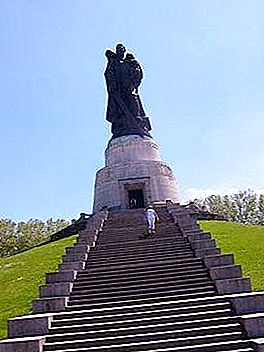
When about an hour was left before the assault, the soldiers heard a cry from the ground. There, on the ruins of an old building, clinging to the corpse of her mother, a little girl sat. Nicholas learned all this when, under cover of his comrades, he was able to break through to the ruins. Grabbing the child, Nicholas rushed back to his own, having received a serious wound along the way, which did not prevent, on a par with everyone, to commit a truly heroic feat.
Description of the monument “Warrior-Liberator”
As soon as the last stronghold of fascism was taken by Soviet soldiers, Evgeni Vuchetich met with Maslov. The story of the rescued girl prompted him the idea to create a monument to the soldier-liberator in Berlin. It was to symbolize the dedication of the Soviet soldier, protecting not only the whole world, but also each individual person from the threat of fascism.
The central part of the exposition is occupied by the figure of a soldier, who holds the child with one hand, and the second sword, lowered to the ground. Under the feet of a hero of the Soviet Union lie swastika debris.
The park in which the memorial was erected is famous for the fact that more than 5, 000 Soviet soldiers were found reposed there. According to the initial idea, at the place where the monument to the soldier-liberator stands, a sculpture of Stalin holding a globe was to be installed in Berlin. Thus, symbolizing that the Soviet government holds the whole world under its control and will never again allow the threat of fascism.








